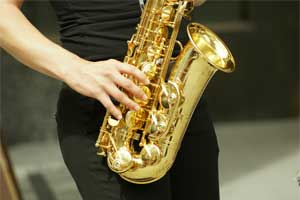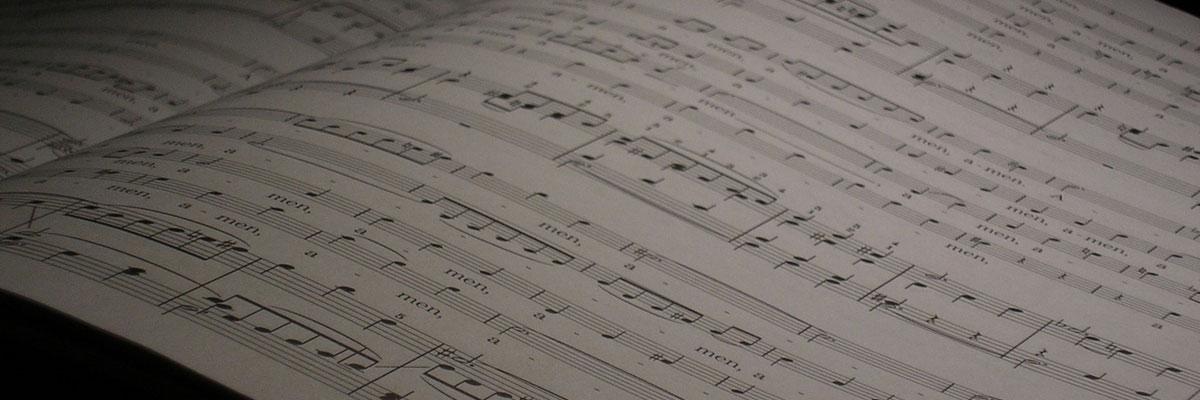If there is one thing that every musician needs more of it’s practice time. In the first years of a musician’s training getting the student used to a regular, effective practice routine is essential to long term success. Technology has come a long way in recent years toward helping us achieve this goal by providing us with a large number of useful software titles and mobile apps that can help us practice in a variety of different ways. Whether you are looking for an app that actively listens to and assesses a student’s performance or a simple app to track a student’s practice time you will find many different options both for desktop computers and for mobile devices.
Most teachers are familiar with or have at least heard of the de facto champion of such apps, SmartMusic, but there are other similar apps that are aggressively trying to expand what such an app can be capable of, some with very impressive results. This article focuses primarily on two specific types of practice technologies. First are programs and apps that actively listen to and assess the performer’s playing. Second are music practice apps that help a student to monitor and self assess their progress with or without the help of a teacher.
 Of particular interest in the first category is a new product known as PracticeFirst. It is available as one of the many different music education software titles available through the MusicFirst Online Classroom. James Frankel, Director of MusicFirst says that “PracticeFirst is a wonderful new interactive practicing tool, for any instrument, including voice and polyphonic instruments such as piano and guitar. We are thrilled to partner with MatchmySound™ to bring this technology to music educators.” Unlike most other assessment tools PracticeFirst is able to assess polyphonic music performances, allowing it to evaluate everything from solo monophonic instruments up to two handed piano pieces.
Of particular interest in the first category is a new product known as PracticeFirst. It is available as one of the many different music education software titles available through the MusicFirst Online Classroom. James Frankel, Director of MusicFirst says that “PracticeFirst is a wonderful new interactive practicing tool, for any instrument, including voice and polyphonic instruments such as piano and guitar. We are thrilled to partner with MatchmySound™ to bring this technology to music educators.” Unlike most other assessment tools PracticeFirst is able to assess polyphonic music performances, allowing it to evaluate everything from solo monophonic instruments up to two handed piano pieces.
Frankel continues, “PracticeFirst comes with a library of useful practice content for students of all levels, plus teachers can upload their own exercises. Additional content from top education curriculum publishers will be available as an add-on purchase that can be incorporated into the PracticeFirst library throughout the coming school year.” Teachers can even import their own music from a MusicXML file for use with the system.
In the second category are a myriad of mobile and web based apps, mostly focusing around tracking practice time, recording those practice sessions, and allowing those sessions to be played back for personal evaluation. One relative newcomer to this field is an app called Music Monitor. Kyle Smith, Orchestra Director at La Cañada High School (7-8) in La Cañada, California gave this new app a try in his classroom and intends to go all in with it for the next school year. Like many teachers he doesn’t have a lot of time during the day that he can allocate to individual lessons. “I have a class of 43 orchestra students, which makes it hard to hear individuals on a regular basis without taking away significant time from rehearsals. Thanks to the app I can still get a chance to listen to and monitor each student’s progress without losing that rehearsal time. I can have each student practice and record their performance then submit it to me through the app so I can listen when I have the time.”
 Music Monitor provides the teacher with an online gradebook and the ability to give assignments to each student. The students can then complete the assignments at school or at home. It wasn’t all smooth sailing at first though. “The signup process could have been a bit easier because the app requires wifi, which the students hadn't all been set up on, and in the end it took two or three days to finally get everyone set up on the service. For those students that didn’t have access to a device at home I make iPads available for students to check out during lunch or study hall during the school day.”
Music Monitor provides the teacher with an online gradebook and the ability to give assignments to each student. The students can then complete the assignments at school or at home. It wasn’t all smooth sailing at first though. “The signup process could have been a bit easier because the app requires wifi, which the students hadn't all been set up on, and in the end it took two or three days to finally get everyone set up on the service. For those students that didn’t have access to a device at home I make iPads available for students to check out during lunch or study hall during the school day.”
As has been said before, practicing is an essential part of being a musician, and any tool that makes practice more fun or more productive can make a significant impact on how quickly your students improve. Give on of the apps below a try and see how easy it is to get students more actively engaged in a regular practice routine.
Interactive Assessment Apps
SmartMusic ($40/year students, $140/year teachers)- PC/Mac/iPad
SmartMusic has a huge library of solo, ensemble, and lesson book music titles, many of which can have the sheet music displayed on screen as the student plays. It is now available not just on PC and Mac but on the iPad as well. Teachers can create classroom groups, add students, send assignments, and maintain student recordings to use as proof of the student’s progress. All submitted assignments can be graded automatically by the program itself and/or graded by the teacher after he or she listens to the recording.
PracticeFirst ($6 per student/year, minimum of 100 students)- Web Based
https://www.musicfirst.com/practicefirst
A new interactive practice system that is integrated with the popular MusicFirst online learning portal. The automatic assessment features provide a very useful graphical representation of a student’s audio performance including pitch and rhythmic accuracy. Recordings are stored in an online gradebook for the teacher to listen to, grade, or save for future reference. MusicXML and audio file import capabilities allow you to use exercises or other musical material that you have created for your students.
Music Prodigy ($19.99 per student/year)- iOS/Android/Mac/PC
A cross platform practice and interactive assessment application with a modest but growing library of titles. Add your own music to the system by dragging in a MusicXML file created in Finale, Sibelius, MuseScore, Noteflight, or almost any other notation system. An add-on system for creating short answer and multiple choice tests is scheduled to be released later in the fall of 2015.
General Practice and Recording Apps
Practice Center ($4.99)- iOS
https://itunes.apple.com/us/app/practice-center/id611351544?mt=8
A versatile and feature packed practice app for iPhone and iPad. Includes a metronome, practice timer, countdown timer, and audio recorder but also many advanced features not found in other apps. For example you can record video from either camera to give yourself a view of your posture and hand position. You can slow down the audio playback to listen more closely to your technique. The app can even accompany you with various drum patterns to use as a background track while you practice.
Music Monitor by Musopen (FREE)- iOS/Android/Web Based
A teacher to student practice monitoring app with classroom gradebook capabilities. Create a class, add students to it, and send them assignments via the app. The student then uses their own mobile device to record their practice sessions and submit them back to the teacher. Listen to a student’s recording, grade it, or send homework reminders to the students via email.
Practice Your Music (a la carte song purchases)- Web based PC/Mac/Chrome
http://www.practiceyourmusic.com/
A cool, interactive way to practice small ensemble music in a more realistic way. Play along with a small on screen combo group on a large variety of songs from classical to jazz as well as world music and the blues. Single out individual instruments or practice solo if needed. Sheet music for any of the instruments can be shown on screen. There is a free three day trial version but other titles are available as a la carte purchases. Unfortunately not all common band and orchestra instruments are supported and the repertoire is rather limited.
Dos and Don’ts for Teachers Wanting To Incorporate Practice Apps and Software
- Do keep in mind that several popular instrumental method books such as Essential Elements and Tradition of Excellence provide free online or software based practice applications specifically tied to the material in their books.
- Do always go through the signup and registration process for any software or mobile app on your own devices before trying to have students do it in class. If your school requires it be sure to get parental approval before proceeding with the actual registration of the students into the system.
- Do plan ahead for setting students up with accounts on whatever app you choose to use. Schedule a day where everyone is supposed to bring in their personal mobile device (if they have one to use at home) and make sure that each student knows their own email address whether than be a personal one or one provided by the school. Bear in mind that some apps also require a parental email address and other information during the signup process.
- Don’t be surprised if some parents refuse to allow their student to install software on their home PC or on a mobile device, but keep in mind that education is key to mitigating any potential problems or parental resistance. Schedule a demo night or record a video of yourself showing off the tools and demonstrating how helpful they are to developing good practice habits.
- Don’t expect that every student will be able to use the app at home. There will always be kids that simply do not have access to the technology outside of school. Make arrangements to provide those students with access to the app or software outside of class time to let them stay up to date on their assignments.
This article originally appeared in NAfME's Teaching Music Magazine. It is reposted here by the original author under agreement with NAfME, the National Association for Music Education.
